 W
WDuring Operation Arc Light from 1965 to 1973, the United States deployed B-52F Stratofortresses from bases in the US to Guam to provide Battlefield air interdiction or BAI, including strikes at enemy bases, supply routes and behind the lines troop concentrations, as well as occasionally providing close air support (CAS) directly to ground combat operations in Vietnam. The conventional bombing campaign was supported by ground-control-radar detachments of the 1st Combat Evaluation Group (1CEVG) in Operation Combat Skyspot. Arc Light operations usually targeted enemy base camps, troops concentrations, and supply lines.
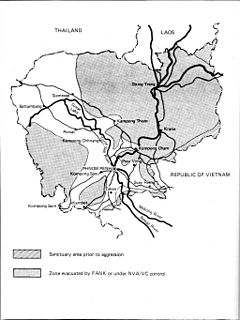 W
WOperation Chenla I or Chenla One was a major military operation conducted by the Khmer National Armed Forces (FANK) during the Cambodian Civil War. It began in late August 1970 and ended in February 1971, due to the FANK High Command's decision to withdraw some units from Tang Kauk to protect Phnom Penh after Pochentong airbase was attacked.
 W
WOperation Commando Hunt was a covert U.S. Seventh Air Force and U.S. Navy Task Force 77 aerial interdiction campaign that took place during the Vietnam War. The operation began on 15 November 1968 and ended on 29 March 1972. The objective of the campaign was to prevent the transit of People's Army of Vietnam (PAVN) personnel and supplies on the logistical corridor known as the Ho Chi Minh Trail that ran from the southwestern Democratic Republic of Vietnam through the southeastern portion of the Kingdom of Laos and into the Republic of Vietnam.
 W
WOperation Ivory Coast was a mission conducted by United States Special Operations Forces and other American military elements to rescue U.S. prisoners of war during the Vietnam War. It was also the first joint military operation in United States history conducted under the direct control of the Chairman of the Joint Chiefs of Staff. The specially selected raiders extensively trained and rehearsed the operation at Eglin Air Force Base, Florida, while planning and intelligence gathering continued from 25 May to 20 November 1970.
 W
WOperation Menu was a covert United States Strategic Air Command (SAC) tactical bombing campaign conducted in eastern Cambodia from 18 March 1969 until 26 May 1970 as part of both the Vietnam War and the Cambodian Civil War. The targets of these attacks were sanctuaries and Base Areas of the People's Army of Vietnam and forces of the Viet Cong (VC), which utilized them for resupply, training, and resting between campaigns across the border in the Republic of Vietnam. The impact of the bombing campaign on the Khmer Rouge guerrillas, the PAVN, and Cambodian civilians in the bombed areas is disputed by historians.
 W
WOperation Sealords was a military operation that took place during the Vietnam War.
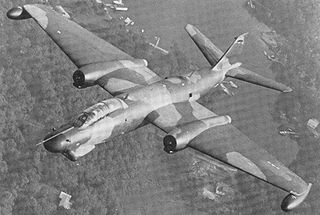 W
WOperation Shed Light was a crash development project in aerial warfare, initiated in 1966 by the United States Air Force to increase the ability to accurately strike at night or in adverse weather. During the 1960s the United States military worked hard to interdict the movement of men and materiel along the Ho Chi Minh trail. The North Vietnamese were experts in the use of weather and darkness to conceal their movement, and understanding the superiority of American air power put their skills immediately to good use. US forces seeking to impede the steady flow of supplies attempted to locate largely static targets during the day with poor results.
 W
WOperation Patio was a covert aerial interdiction effort conducted by the U.S. Seventh Air Force in Cambodia from 24 to 29 April 1970 during the Vietnam War. It served as a tactical adjunct to the heavier B-52 Stratofortress bombing missions being carried out in Operation Menu.
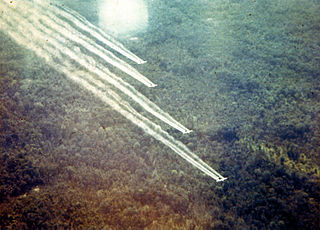 W
WOperation Ranch Hand was a U.S. military operation during the Vietnam War, lasting from 1962 until 1971. Largely inspired by the British use of 2,4,5-T and 2,4-D during the Malayan Emergency in the 1950s, it was part of the overall chemical warfare program during the war called "Operation Trail Dust". Ranch Hand involved spraying an estimated 20 million U.S. gallons (76,000 m3) of defoliants and herbicides over rural areas of South Vietnam in an attempt to deprive the Viet Cong of food and vegetation cover. Areas of Laos and Cambodia were also sprayed to a lesser extent. Nearly 20,000 sorties were flown between 1961 and 1971.
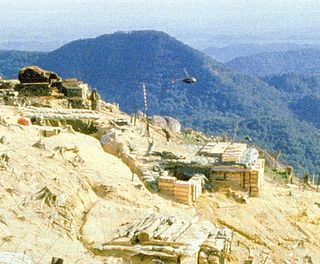 W
WThe Battle of Fire Support Base Ripcord was a 23-day battle between elements of the U.S. Army 101st Airborne Division and two reinforced divisions of the People's Army of Vietnam (PAVN) that took place from 1 to 23 July 1970. It was the last major confrontation between United States ground forces and the PAVN during the Vietnam War. Three Medals of Honor and six Distinguished Service Crosses were awarded to participants for actions during the operations.
 W
WThe Sơn Thắng massacre, [ʂəːŋ˧˧ tʰaŋ˦˧˥]) was a massacre conducted by the United States Marine Corps during Operation Imperial Lake on 19 February 1970, in which five women and 11 children were killed. The Marines reported the civilians killed as being Vietcong (VC) killed in a firefight. These incidents were reported by civilians and charges were brought up against the Marines. Four Marines were court-martialled and one was sentenced to 5 years in prison and the other to life, but Major General Charles F. Widdecke reduced each sentence to less than year.
 W
WOperation Tailwind was a covert incursion by a small unit of United States Army and allied Montagnard forces into southeastern Laos during the Vietnam War, conducted from 11 to 14 September 1970. Its purpose was to create a diversion for a Royal Lao Army offensive and to exert pressure on the occupation forces of the People's Army of Vietnam (PAVN). A company-sized element of US Army Special Forces and Montagnard commando of the Military Assistance Command, Vietnam Studies and Observations Group conducted the operation.
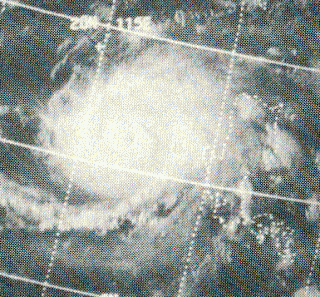 W
WSuper Typhoon Kate, known in the Philippines as Typhoon Titang, was the second of two super typhoons to strike the Philippines within a week in October 1970, the first being Super Typhoon Joan. As a result, Kate produced heavy damage and over 631 casualties. At the time, Kate was one of the deadliest typhoons to strike the Philippines.
 W
WTyphoon Patsy, known in the Philippines as Typhoon Yoling, was the twenty-seventh named storm, twelfth typhoon, and seventh super typhoon of the 1970 Pacific typhoon season.
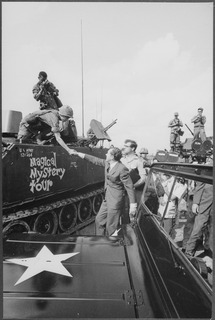 W
WVietnamization was a policy of the Richard Nixon administration to end U.S. involvement in the Vietnam War through a program to "expand, equip, and train South Vietnamese forces and assign to them an ever-increasing combat role, at the same time steadily reducing the number of U.S. combat troops". Brought on by the Viet Cong's Tet Offensive, the policy referred to U.S. combat troops specifically in the ground combat role, but did not reject combat by the U.S. Air Force, as well as the support to South Vietnam, consistent with the policies of U.S. foreign military assistance organizations. U.S. citizens' mistrust of their government that had begun after the offensive worsened with the release of news about U.S. soldiers massacring civilians at My Lai (1968), the invasion of Cambodia (1970), and the leaking of the Pentagon Papers (1971).
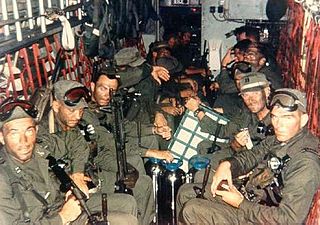 W
W